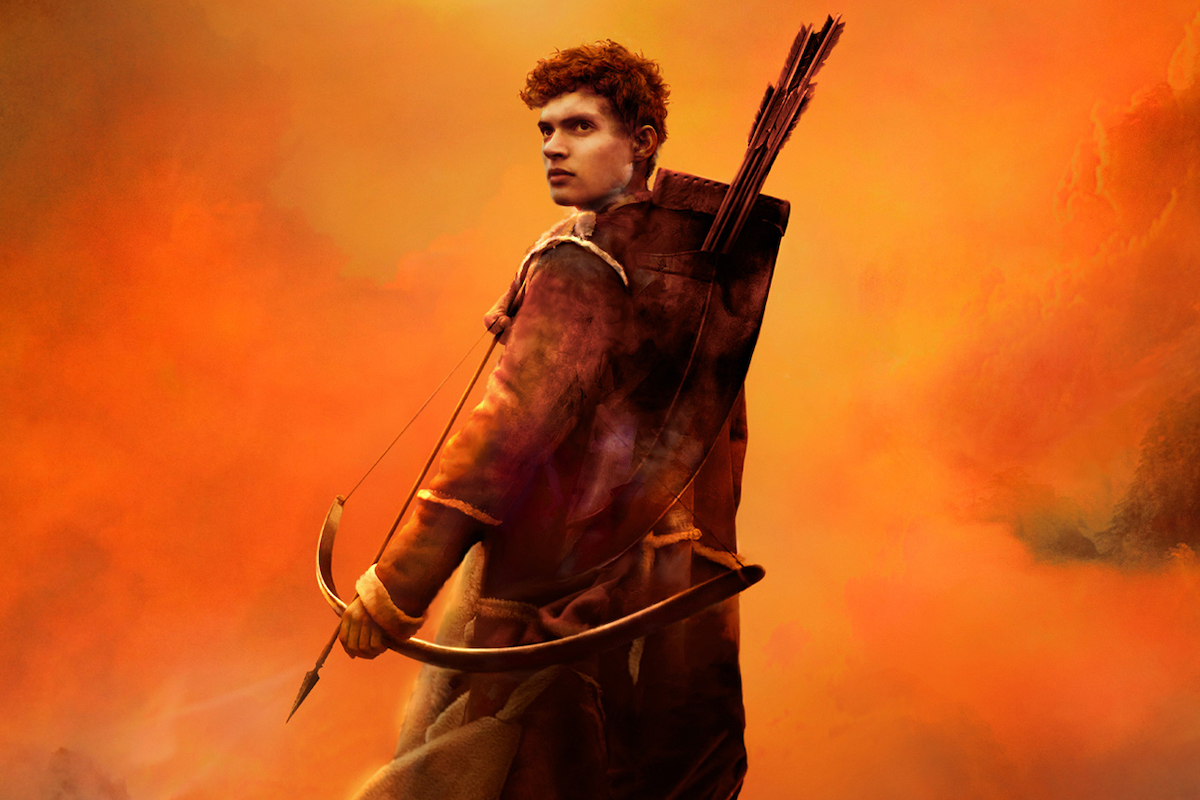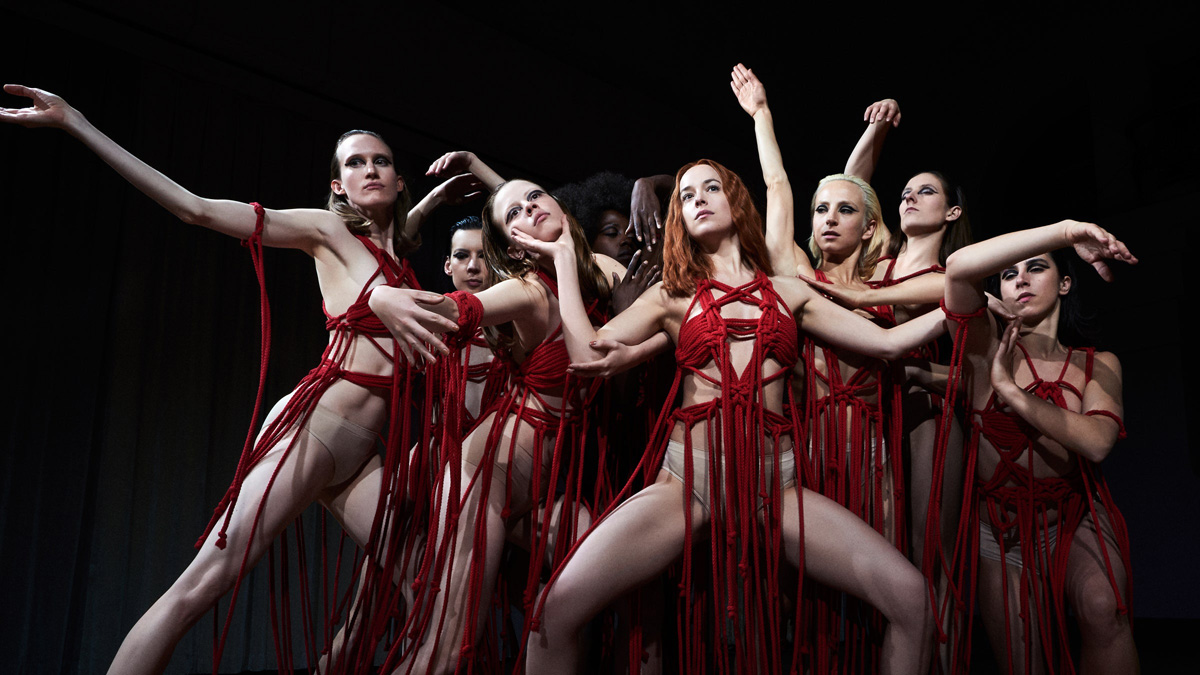THIS ARTICLE CONTAINS SPOILERS FOR “THE WHEEL OF TIME” AND THE “DUNE” BOOKS
Amazon Prime’s adaptation of Robert Jordan’s epic fantasy novels “The Wheel of Time” was released late in 2021. The books were incredibly popular, selling more than 90 million copies all over the world. The series follows Moiraine Damodred, a member of an all-female magical organization, as she decides which among a group of rural youths is the person prophesied to save or destroy the world.
The first novel is about determining whether Mat Cauthon, Perrin Aybara or Rand al’Thor is the Dragon Reborn, the reincarnation of a feared savior, Lews Therin Telamon. It becomes clear halfway through the book that Rand is the Dragon Reborn. The rest of Rand’s story involves dealing with the ramifications of his identity.
But how do these mass-market books explore the tropes involved with Chosen Ones? Who might have inspired the conception of Rand al’Thor? And what are the problems and criticisms leveled against Chosen Ones in fiction?
Who is Rand al’Thor?
Caption: Rand al’Thor is one of the main characters of “The Wheel of Time”.
Rand al’Thor is the primary protagonist of the book series. He is a shepherd in a small sleepy village alongside his best friends Mat Cauthon and Perrin Aybara. This all changes when dark forces attack the village intent in capturing one of the three of them.
The attack is repelled by the mysterious Moiraine Damodred, a sorceress who reveals that one of the three boys is the reincarnation of Lews Therin Telamon. Lews Therin was the Dragon, the most powerful sorcerer in the world whose hubris led to the almost extinction of humanity thousands of years ago.
As the story progresses, it is revealed that Rand is the Dragon Reborn. Despite Moiraine Damodred’s guidance, he struggles with his duty as the Dragon. There are also many other complications involved with being the Dragon Reborn. But what exactly does that title mean in the story?
What is the Dragon Reborn?
In the world of “The Wheel of Time,” the dead don’t go off into an everlasting eternity. Instead, souls are reincarnated again and again, spun out by the eponymous cosmic wheel. This concept is borrowed from the Hindu concept of samsara, the belief that death, life and rebirth are all part of an endless cycle.
However, one soul is specifically anticipated and designated by the Wheel to serve as the Dragon. Contrary to other portrayals, the Dragon in the books isn’t a large fire-breathing reptile but rather a champion of good who is destined to fight the Dark One, the anti-god who seeks the destruction of the universe.
Although originally a benevolent figure, the previous Dragon, Lews Therin, made a fatal mistake that caused the collapse of civilization and doomed countless men across history. Because of his mistake, the Dragon Reborn, his reincarnation, isn’t a hopeful being but a dreaded threat.
A large part of Rand al’Thor’s journey involves not just mastering the powers of being the Dragon Reborn but also determining what exactly he should be doing. His actions are more often guided by a set of prophecies pertaining to him, some of which he deliberately fulfills while others are fulfilled without him knowing it. It is made abundantly clear that the Dragon Reborn is a designation that involves pain, hardship and sacrifice.
How Does “The Wheel of Time” Explore Chosen Ones?
Caption: The series takes a nuanced approach to portraying its hero.
Robert Jordan, the author of the series, wanted to explore and deconstruct the tropes and cliches surrounding Chosen Ones in fiction. He patterned Rand al’Thor with different heroes and gods to thoroughly analyze these tropes. This is why Rand is an amalgamation of King Arthur, the Norse God Tyr and even Jesus.
But there are several ways Jordan ensured his own fictional messiah would challenge the conventions surrounding such a character.
Here are just a few ways Jordan explored the nuances of the messianic archetype.
-
Ta’veren
In the world of the books, souls are like threads woven by the Wheel of Time to form the shape of history. Most threads are simply woven into this pattern without consequence. Others are far greater. Called ta’veren in the books’ fictional language, these threads are so influential that they alter the destinies of other souls that come near them. Jordan uses the concept of ta’veren in the books to justify many plot elements that occur around Rand al’Thor and his friends. For example, Mat Cauthon has an outrageous amount of luck that ensure he wins all gambling games and he avoids certain death. In this way, Jordan neatly explains how his main characters can survive for long while also winking cleverly at his readers.
-
The Taint
The Dragon Reborn is a sorcerer and can use the world’s magic system. However, Lews Therin, the previous Dragon, made a mistake when he fought the Dark One. Because of his fumble, the source of magic for all men, including the Dragon, was tainted by evil. This means all males who can use magic would slowly go insane. The Dragon Reborn is destined to also meet this same fate; the very power he is supposed to use to save the world will kill him.
There is also a lot of doubt about how the Dragon can even save the world if he loses his mind and many people in the books want to eliminate him before it becomes an issue. This creates an interesting dynamic where the messiah character is treated as a threat rather than a hero. Critics have also compared it to the concept of power corrupting. As the adage goes, all power corrupts and absolute power leads to absolute corruption. This calls to question how you can trust messiahs. If they must save the world, they must be powerful. But if power corrupts, how can you put your fate and the fate of the world in their hands?
-
Dreaded Arrival
As previously mentioned, the Dragon Reborn is destined to experience the corruption his previous incarnation caused. Rand al’Thor quickly develops the madness associated with the corruption. More specifically, he begins to hear the voice of the previous Dragon, Lews Therin. The element of madness and corruption becomes more complicated because the Prophecies of the Dragon, the ancient foretelling that speaks of his return, specifically mentions that the Dragon will “shatter the world again with his coming, and make it anew.” There are also references to the Dragon scouring the earth, lines that speak of “no salvation without destruction” and so on.
The concept of the Chosen One is almost always tied with religious imagery. With Western fiction, it is more common that the Chosen One evokes Christian imagery. Although Rand’s story sometimes alludes to the trials of Jesus, the imagery regarding him has more in common with the book of Revelation. This makes him a more feared and dreaded messiah compared to other fictional counterparts.
-
Shadow of Doubt
The final way Jordan plays with the concept of a Chosen One is that there is no guarantee that Rand will win. Throughout the books, characters repeatedly point out that the Prophecies of the Dragon only say that their messiah will fight the Dark One, not that he will triumph. This makes a lot of people understandably anxious.
And with the rest of the problems associated with the position (the madness, opposition within his own forces, his own insecurities), its no wonder that many characters in the books don’t look at the Dragon Reborn as a hero but rather as a threat and a walking timebomb.
While Jordan masterfully explores the nuances of becoming a messiah throughout the books, he is not the first author to delve deeply into what it means to be chosen. In fact, there is an author who more thoroughly deconstructed the notion of a messiah in fiction.
How Did Paul Atreides Influence Rand al’Thor?

Frank Herbert is the science-fiction genre’s equivalent to J.R.R. Tolkien. His magnum opus, “Dune”, was first published in 1965, 25 years before Jordan published “The Wheel of Time”. In “Dune”, Herbert explores a plethora of concepts that hadn’t been explored much in those days. Namely, he delved into the environmental effects of colonization, religious extremism, corporate greed and, of course, the nature of the Chosen One. In fact, the second installment of the series is even named “Dune Messiah”. His messianic figure was Paul Atreides.
Paul Atreides is the son of a duke. He grows up with power, privilege and training from his mystic mother. When Paul’s family is betrayed and almost wiped out, he takes advantage of prophecies regarding a being known as the Kwisatz Haderach to take control of a native population. With these people he co-opted at his back, Paul seizes control of the most valuable substance in the galaxy and essentially hostages his way to the throne.
Readers over the years have pointed out how much Paul and Rand have in common. Both were thrust into greatness because of their heritage. They both have access to powers only men can use in their worlds. They are incredibly aware of the burden their duty as the savior places on them and they both suffered immensely for their lot in life. Rand loses a hand in “Knife of Dreams” while Paul goes blind in “Dune Messiah.” They also steeled themselves to committing horrifying actions for the sake of their mission.
However, there can be no direct comparison between Paul Atreides and Rand al’Thor simply because their authors were playing with the concept of a messiah in different ways. Namely, Herbert wanted to show the consequence of a manufactured messiah while Jordan was exhibiting the value of an authentic messiah,
Manufactured Messiahs vs. Authentic Messiahs
In the “Dune” books, a shadowy organization of women known as the Bene Gesserit are responsible for the inception of Paul Atreides. This sisterhood used their influence and psychic powers to initiate a millennia-long breeding program in hopes of refining the power of prescience. Their hope was to create a being called the Kwisatz Haderach, a powerful psychic whose vision could lead humanity into a golden age. Of course, they also planned that this being would be born under their control.
In “The Wheel of Time” books, the Dragon Reborn is not the result of mortal (re: fallible) plans but rather a natural and cosmic event. Compared to Paul, Rand is an authentic messiah, ordained by a cosmic plan to save the world. Paul was contrived and his rise to power was largely thanks to his exploitation of local cultures and prophecies. While Rand is given no guarantee of success despite his cosmic origins, he is still nonetheless the real deal.
Both book series explore the idea of a messiah in opposite ends of the spectrum. Paul is pragmatic, ruthless and, in the end, doomed because he is not a real savior. His tragedy is that he traps himself in the role of being a savior, using it to take revenge on his enemies and become supreme. Despite all his power and prescience, Paul ends up being a mortal after all.
Rand al’Thor never wanted to be a messiah. He shares Paul’s pragmatism and even his cynicism later in the books but he eventually sees the joy of his role. Rand discovers that being a messiah is about brining hope and he comes to fully believe the righteousness of his calling. Rand becomes the most powerful person in the world, but he doesn’t wield it for himself. He wields it to protect others and fulfill his role as a messiah.
The Chosen One Trope Today

The concept of a Chosen One is a staple in fantasy literature. Aside from Paul and Rand, there’s also Harry Potter, Percy Jackson from the works of Rick Riordan, Clary Fray from “City of Bones” and Vin from “Mistborn.” But recently there has been a lot of criticism levelled against the Chosen One trope.
One of the greatest criticisms is that because most well-known fantasy authors are white, their heroes and messiahs are mostly white as well. This plays into the “White Savior” trope where a white hero solves the problems fictional people of color seem incapable of resolving on their own. These heroes also tend to be Mary Sues, a term that refers to characters who are perfect and powerful in every way. There is now a trend where books don’t feature Chosen Ones at all but focus on morally gray antiheroes or complicated individuals who suddenly have to wrestle with their own struggles.
Rand al’Thor acts as a sort of bridge between the concepts of the noble Chosen One from the old days of high fantasy to the gritty antiheroes of modern fiction. He is a flawed individual suddenly thrust into the role of a messiah. His own journey of self-discovery paints a picture of a man who loses all hope only to find it again after he accepts his purpose. This makes him welcome addition to the legendary heroes of fiction.



